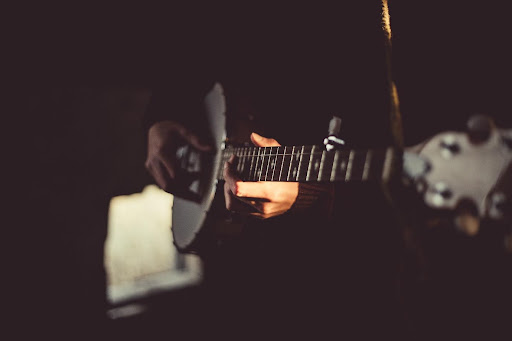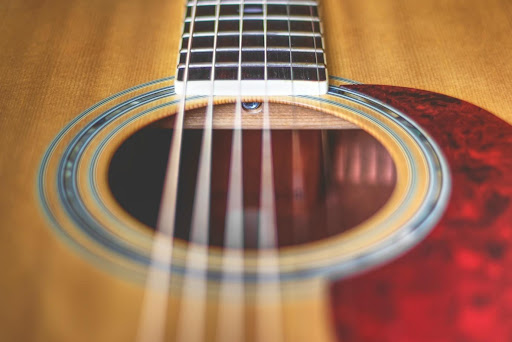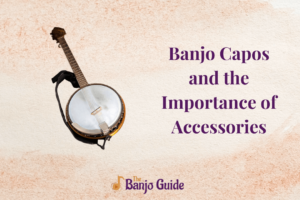A banjo stand is a popular accessory available that helps to keep a banjo in an upright position. The stand holds and supports the banjo in place and provides enough convenience for the player.
A banjo stand is handy for musicians performing for long hours. During long hours of performance, a banjo stand comes in handy to prevent the player from getting tired.
Most players use a banjo stand to rest the instrument when not in use. The section below is exploring the benefits of a banjo stand and how to find a suitable banjo stand for you.
How a Banjo Stand Can Improve Your Playing Experience?
A banjo stand improves a player’s playing experience significantly. The section below mentions some of the aspects of improvement.
Prevents Tiredness
Established musicians and banjo players often struggle with maintaining consistency throughout their stage performances. Despite beginning the performance with high energy, the constant carrying of the banjos will likely tire the artists.
Having a banjo stand nearby would always help prevent the possible tiredness of the player. The player can rest the equipment whenever needed. They can also place the banjo on the stands and play comfortably too.
Convenience
It is not very convenient to place a banjo into its original case after each performance on stage. As a stage performance demands the player to perform multiple numbers, the player can only keep the banjo in its protective case after finishing the entire performance.
So, banjo stands to provide the option to keep the banjo aside during breaks or after each performance. This lets the player easily pick up the banjo whenever needed.
Protection
A banjo is a relatively expensive musical instrument. Thus, it is not feasible to place them on random surfaces or stands as it could cause damage to the banjos. The design of a banjo stand consists of a protective cushion or padding at places that come in contact with the banjo.
So, a banjo stand supports banjos without causing any scratches on them. Even if the banjos are heavy, the thick padding on the stand supports them well.
Comparing Different Types of Banjo Stands: Which One is Right for You?
Many different designs, sizes, models, etc., are available for banjo stands. The section below details different types of banjo stands and their features.
Three primary types of banjo stands are popularly sold across the globe. They are:
- Floor stands
- Table stands
- Wall mount stands
Floor Stands
- Floor stands are undoubtedly the most famous banjo stands worldwide.
- As the name indicates, they support the banjos from floor height.
- They are built with incredible sturdiness.
- Floor banjos enable the players to position their banjos at a comfortable position and height on the performance floor.
- They are relatively bigger than the other types of banjo stand.
Table Stands
- Table stands are relatively less common in the banjo world.
- They come in handy when there is not enough space to accommodate a floor stand on the performance floor.
- They are not as stable and robust as a floor stand.
- The player might have difficulty comfortably playing the banjo on a table stand.
- But for resting the banjo, table stands are well and good.
Wall-Mount Stands
- Wall mount stands are not at all typical in the banjo world.
- As they are fixed onto a wall, players can have much difficulty using the instrument flexibly.
- They also are significantly less stable.
- Playing is a bit difficult with them, but most pro musicians and banjo players do not prefer them.
Portable Banjo Stands: Perfect for Gigs and Traveling Musicians
Many modern banjo stands focus on providing maximum portability and convenience to the player. The introduction of portable banjo stands is the latest addition to the banjo stands collection worldwide.
A portable banjo stand exhibits excellent mobility and associated features. They are primarily lightweight yet highly stable. Most portable banjo stands feature a foldable design. This foldable design lets the user conveniently fold the stand and fit into any compact space.
This ergonomic and portable design helps musicians on the go to take the stand conveniently with them. Traveling musicians are the group that benefits immensely from these portable banjo stands.
As portable banjo stands are lightweight, an anti-slip rubber foot is attached at the bottom for extra banjo stand stability. This banjo stand’s anti-slip feet is quite exclusive to portable banjo stands. They also come with soft foam arms and durable building to ensure protection and longevity for the banjo.
Long-Term Benefits of Using a Banjo Stand to Protect Your Instrument
Some long-term benefits of using a banjo stand to protect your instrument are as follows.
- As most banjos are made of wood, humidity can damage them. Constant exposure to humidity or moisture can permanently damage a banjo in the long term. By using a banjo stand regularly on stage, the player prevents any chances of the banjo coming in constant contact with random surfaces with moisture content or high humidity.
- Too much hassle and rough usage can cause scratches and permanently damage banjos. Having a banjo stand on stage allows the player to safely keep the banjo when not in use. This prevents unwanted hassles with the banjo and lets them last for quite a long time.
- Multiple banjo stands are available that let you store and arrange more than one banjo. In exhibitions or displays, you can use multiple banjo stands to ensure safety for all the banjos.
- For people with less safe storage environments available for banjos (pets, children, etc.), wall-mount stands are a great option to permanently store the banjos. These options contribute to the longevity of the banjos and help retain them in mint condition for quite a long time.
How Do You Choose the Best Banjo Stand for Your Banjo?
You can find the best possible stand for your banjo by attending to certain basic features. Some of those prominent features are discussed below.
Type of Stand
Three different kinds of banjo stands are currently available: floor stand, table stand, and wall-mount stand. The floor stand is the most popular and is highly stable. The wall-mount stand is tough to play on. Choosing the right kind of stand can add to or lose the player’s comfort on stage.
Material
Banjo stands are available in various materials like
- Metal
- Wood
- Plastic
Wood gives a classic look to the stand and is highly durable. Wood is also the most common material used for building banjo stands. Plastic is the most affordable option, but they are, unfortunately, the least common option among them. Metal is used by many due to its high durability.
Portability
Banjo stand portability is essential when choosing a banjo stand. Because banjos are musical instruments and the players are supposed to travel constantly, it is crucial for the banjo stand to be portable enough to take them with the players. To judge the portability, you can consider features like the weight of the stand, stability of the stand, options to fold, and many more.
Paddings
The design of a banjo stand involves rubber padding at the bottom of the stand where the banjo is supposed to place. If there is not enough padding, chances are high for the banjo to get scratched. It would not be ideal because the banjo is an expensive instrument.
Summary
Banjo stands are convenient devices that support and store banjos when not in use. Banjo stands are mainly used by musicians supposed to perform long hours on stage. A banjo stand lets them take a break by resting it on the stand, relieving them from tiredness.
Banjo stands are helpful for storage purposes too. The three significant banjo stands are floor, table, and wall-mount stands. There is also a new section called portable banjo stands. You can purchase the best banjo stand based on its design, material, padding, portability, etc.
FAQs
1. Are guitar and banjo stand the same?
Although the purpose of a guitar and banjo stand are the same, they are very different products. Banjo stands usually weigh much more than guitar stands. Also, banjo stands have relatively wider bottoms to fit correctly in a reasonably-sized banjo. A guitar stand is less wide in design.
2. Are banjo stands a must?
Banjo stands are not must-have equipment for banjo players. They hold many benefits. But players can also perform well without a banjo stand. Musicians likely to perform for relatively longer durations benefit significantly from using a banjo stand.
3. Is it better to keep a banjo in a stand or a case?
It is always better to keep a banjo in a stand. But it is quite impossible to keep the banjos inside the case after every performance on stage. So, for such instances, a banjo stand would work just fine. It supports the banjo and protects it from any scratches or other damages.
4. Can you put a banjo on a guitar stand?
Putting or placing a banjo on a guitar stand is not ideal. A guitar stand’s shape and design differ from what a banjo needs. Placing a banjo on a guitar stand could damage the banjo and could cause permanent damage.






